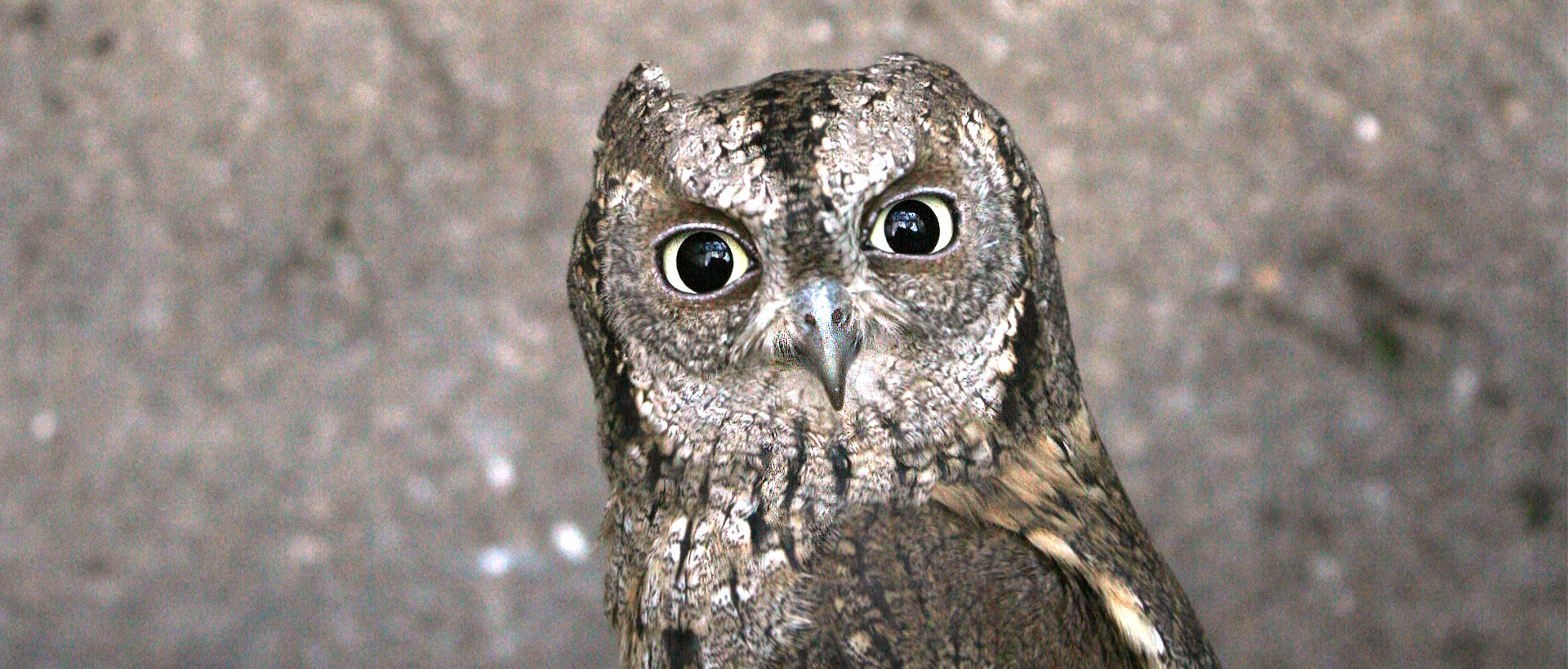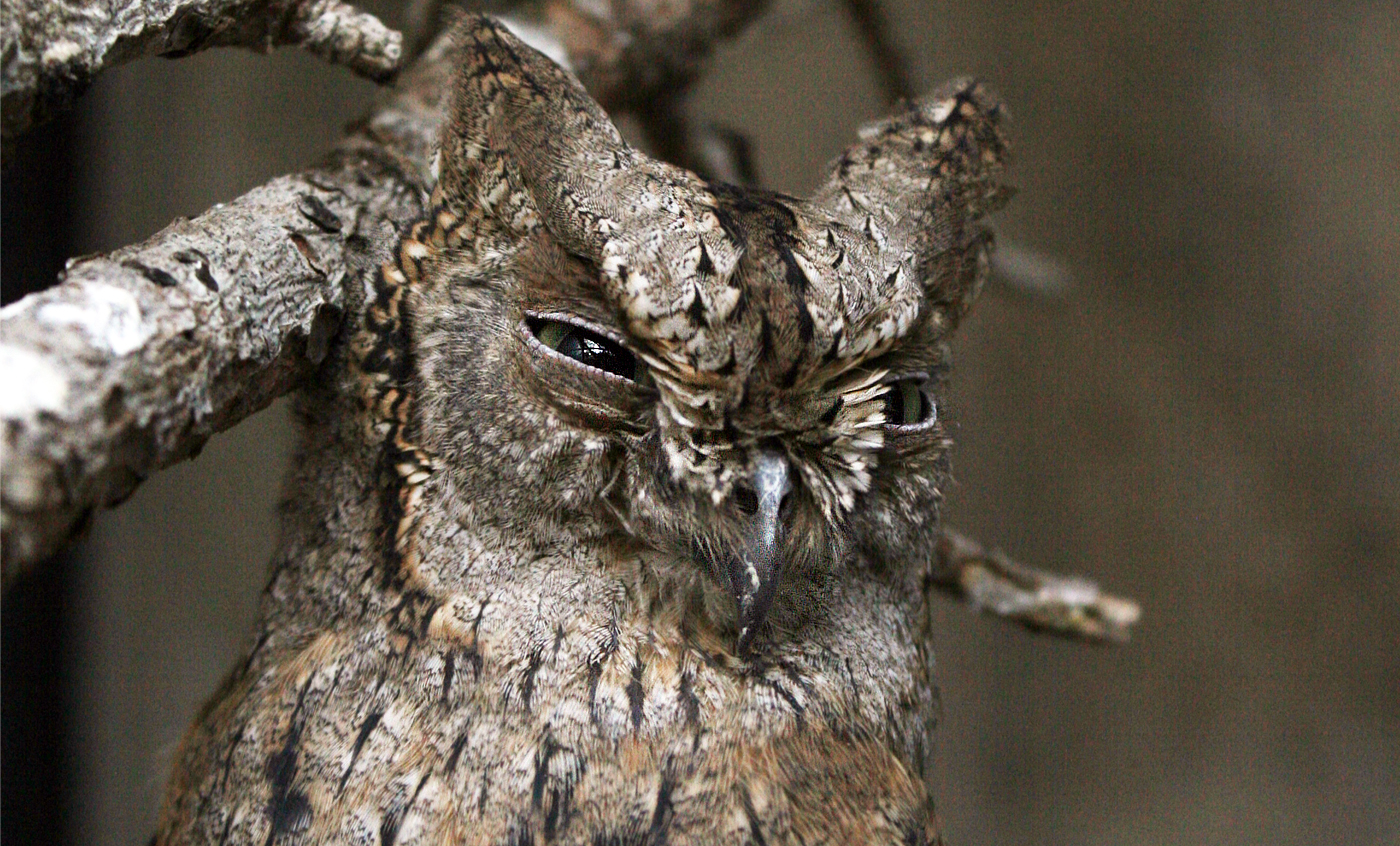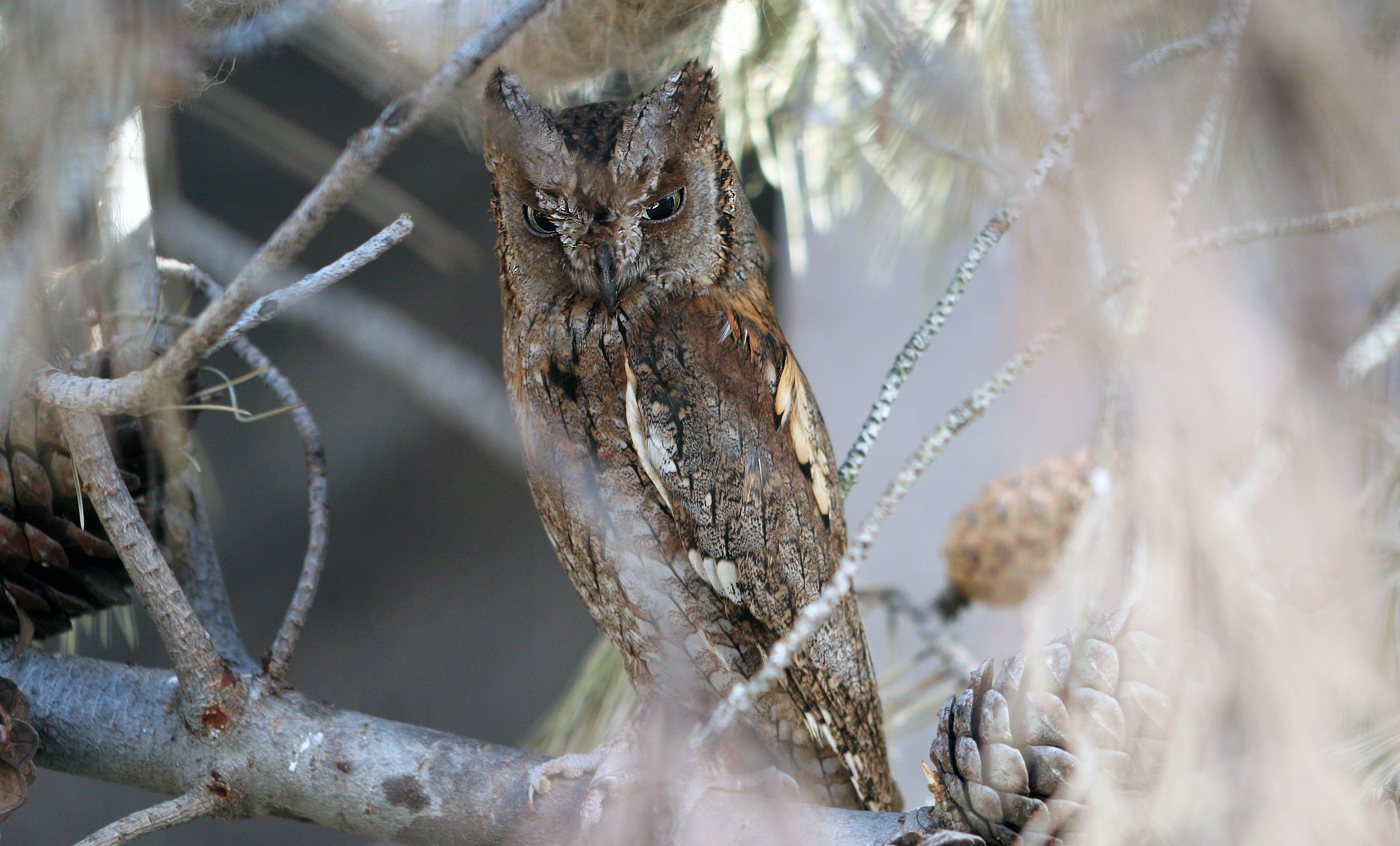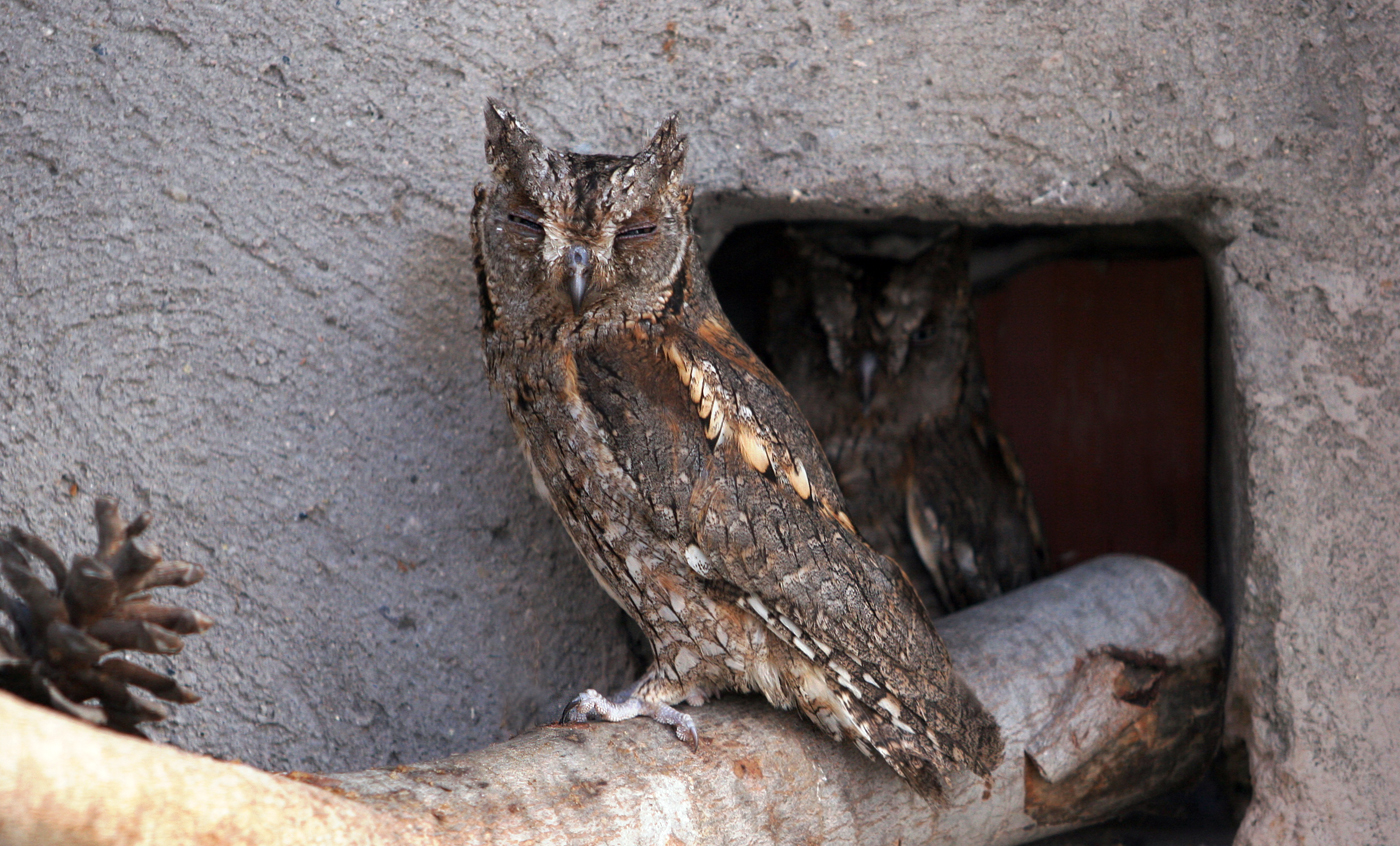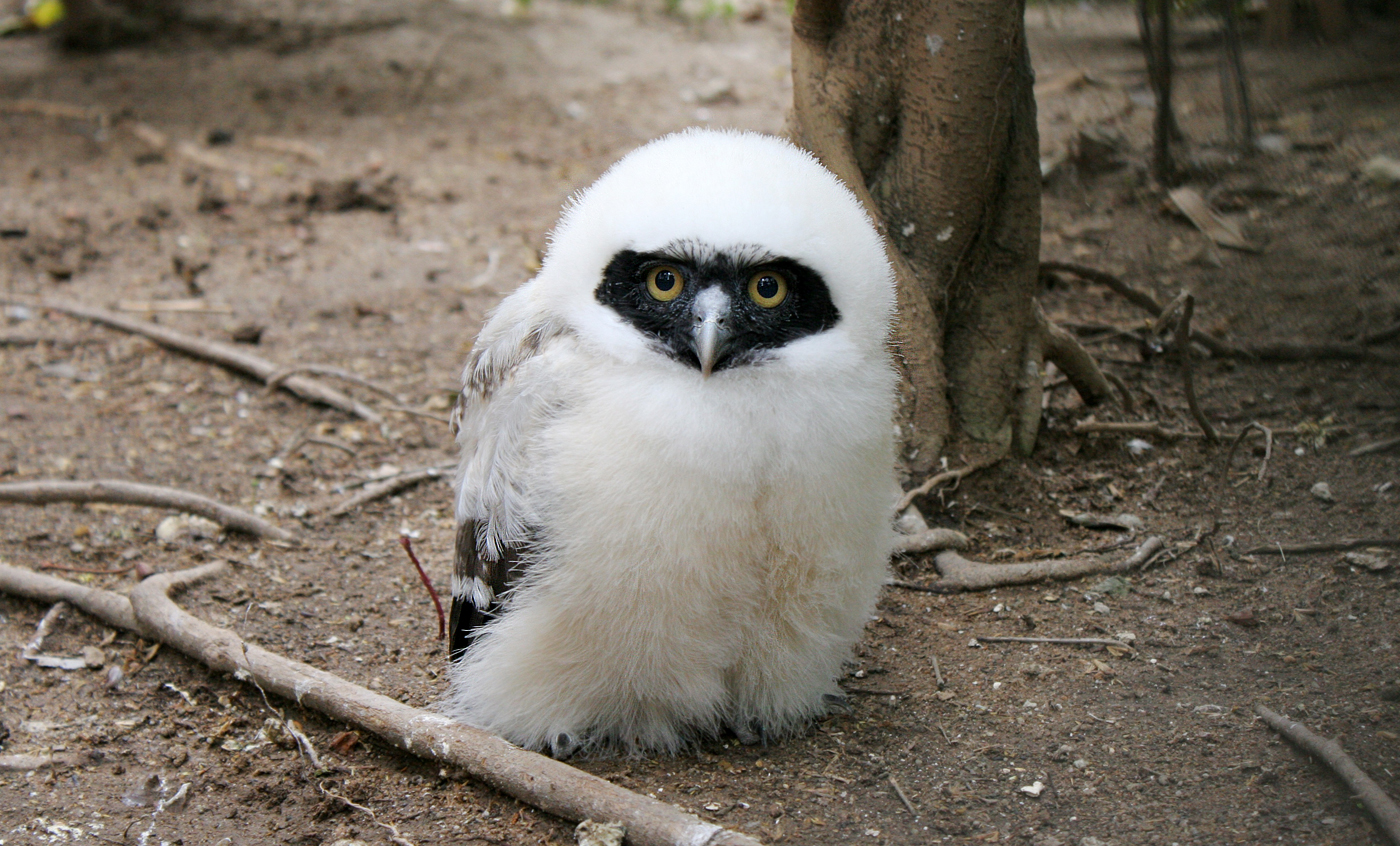Eurasian scops-owl
The Eurasian Scops-owl is the smallest owl found in Spain. It lives in woods, cultivated areas with trees and in parks and gardens in the cities of southern Europe, central Asia and central Africa. It has two crests, resembling ears, which help us distinguish it from the little owl.
Its diet is basically insectivorous and it feeds on moths, grasshoppers and coleoptera. It is a trans-Saharan migrant, which spends the winter in Africa south of the Sahara and comes to Spain to breed with the arrival of spring.
Natural habit
Temperate zones of Europe and Asia to Mongolia and the Sahelian-Saharan strip
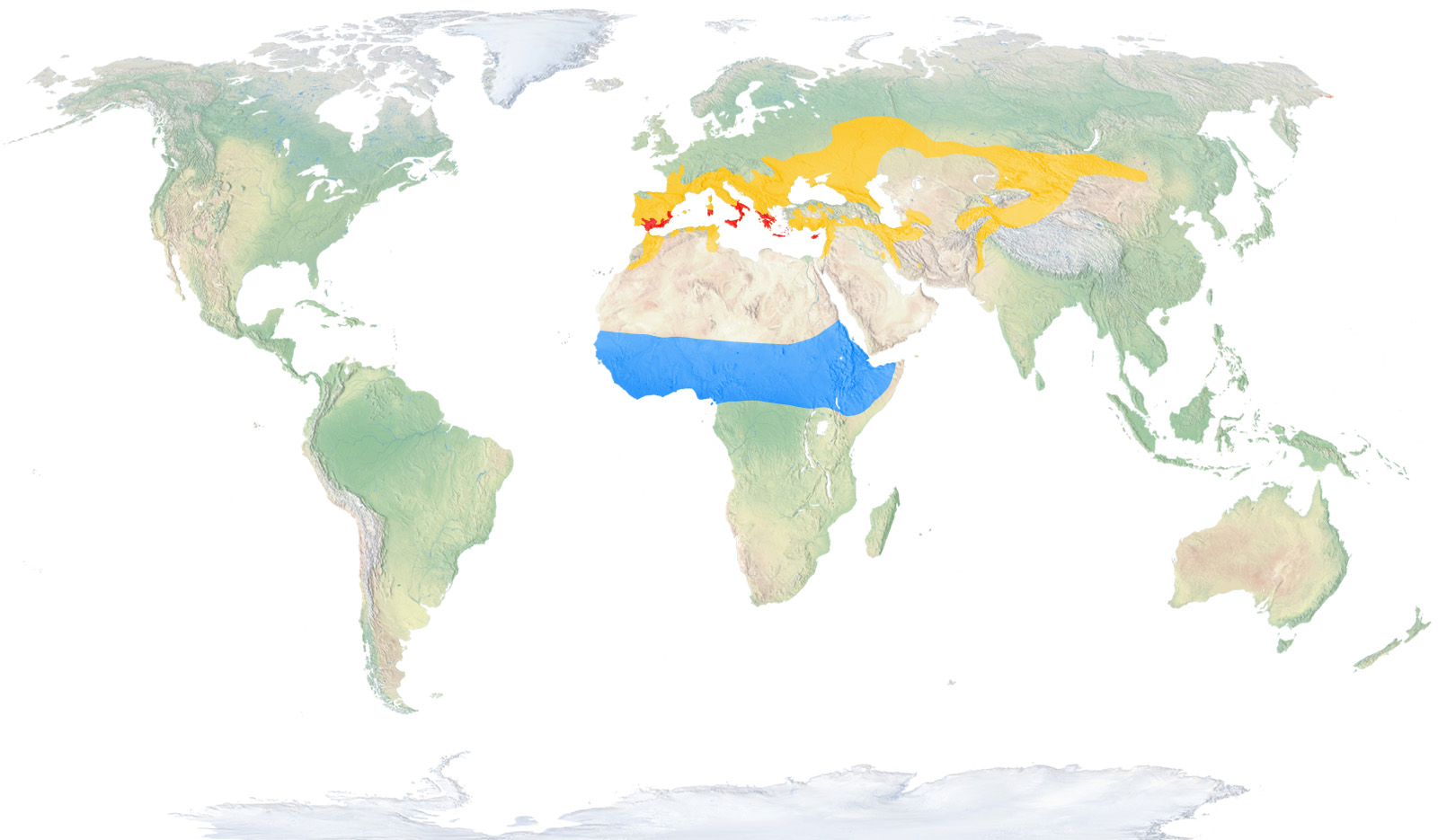
- Distribution / Resident
- Breeding
- Wintering
- Subspecies
Risk level
- Extint
- Extint in the wild
- Critically endangered
- In Danger
- Vulnerable
- Near threatened
- Minor concern
- Insufficient data
- Not evaluated
Taxonomy
Physical characteristics
Biology
Reproduction
Biology
The Eurasian eagle-owl is the smallest Strigiformes in our country. It has two tufts on its head, which look like ears, and help us to distinguish it from the little owl. The plumage is brown toned all over, with some black spots on its breast, dorsal and wings, and mixed white and brown colours on its primary feathers and tail. It is absolutely cryptic due to its plumage and, for protection and camouflage, it tends to perch against tree trunks so that it blends in with the bark.
It lives in forests, sowed fields with trees and inside parks and gardens in the cities in southern Europe, central Asia and central Africa.
It is basically an insectivore and feeds on nocturnal butterflies, locusts and beetles.
The breeding season starts in March and stretches out until August. It is a monogamous bird that builds its nests in cavities and holes in trees, which can be reused for many years. It tends to lay from two to six eggs, although the most common number is three or four, which are incubated 24 or 25 days, although this can take up to 31 days, by the female.
It is a trans-Saharan migrant, spending the winter in Africa south of the Sahara and returning to our lands in the springtime. Families tend to remain together during the post-nuptial migration.
Although not endangered in the world, the lack of favourable breeding habitat is worsening, and the number of prey are dropping due to the systematic widespread use of pesticides. The most important nesting populations in all of Europe are on the Iberian Peninsula and in Croatia. On the rest of the continent, they have gradually and continuously been disappearing due to the intensification of agricultural operations.




